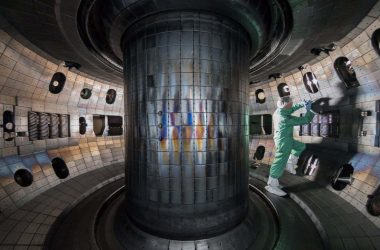A “phonon laser” emits particles of sound as an alternative of sunshine
Dmytro Razinkov/Alamy
A tiny, levitated bead is on the core of an unprecedentedly shiny laser that shoots particles of sound as an alternative of sunshine.
Simply as a ray of sunshine is made up of many particles known as photons, sound consists of particle-like chunks known as phonons. For a number of a long time, researchers have been creating “phonon lasers” that output these particles in a slender beam, much like the way in which optical lasers emit photons.
Now, Hui Jing at Hunan Regular College in China and his colleagues have created the brightest phonon laser but.
The center of their gadget was a roughly micrometre-long silica bead, in regards to the dimension of a typical bacterium. They used two beams of sunshine to levitate the bead and surrounded it with a reflective cavity. Any small vibration of this bead created phonons, which had been then trapped and amplified within the cavity. This continued till there have been sufficient phonons to make up a laser-like beam.
A number of analysis teams had examined comparable designs earlier than. However Jing and his colleagues added an electrode proper beneath the bead, which produced fastidiously chosen electromagnetic indicators. This modification enhanced the laser’s “brightness” – the quantity of energy it delivered at every phonon frequency – tenfold, in addition to making its beam tighter and serving to it last more. Jing says that previous gadgets, from his workforce and others, labored for dozens of minutes solely, however the newest phonon laser may function for over an hour.
Phonons are much less affected by shifting by liquids, so that they may very well be more practical than standard lasers for imaging watery tissues in biomedicine or in some deep-sea monitoring gadgets, Jing says.
However Richard Norte on the the Delft College of Know-how within the Netherlands says present experimental set-ups, which require exact tuning of each element, are too intricate. Phonon lasers could require years of analysis and engineering earlier than they match the usefulness of their optical counterparts.
“There’s pleasure about phonon lasers given the impression that optical lasers have had on trendy life, however time will inform if there shall be an equal impression,” he says.
Subjects:












